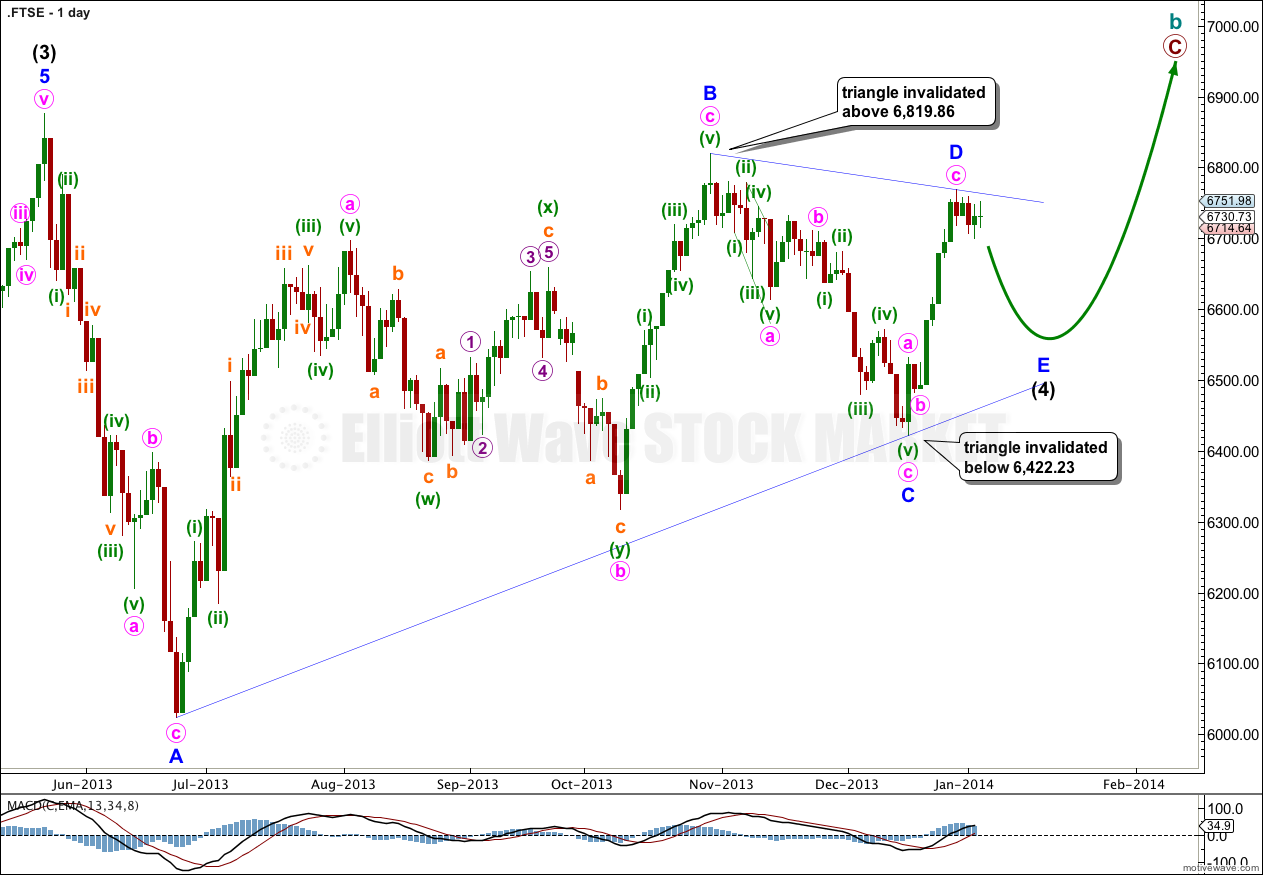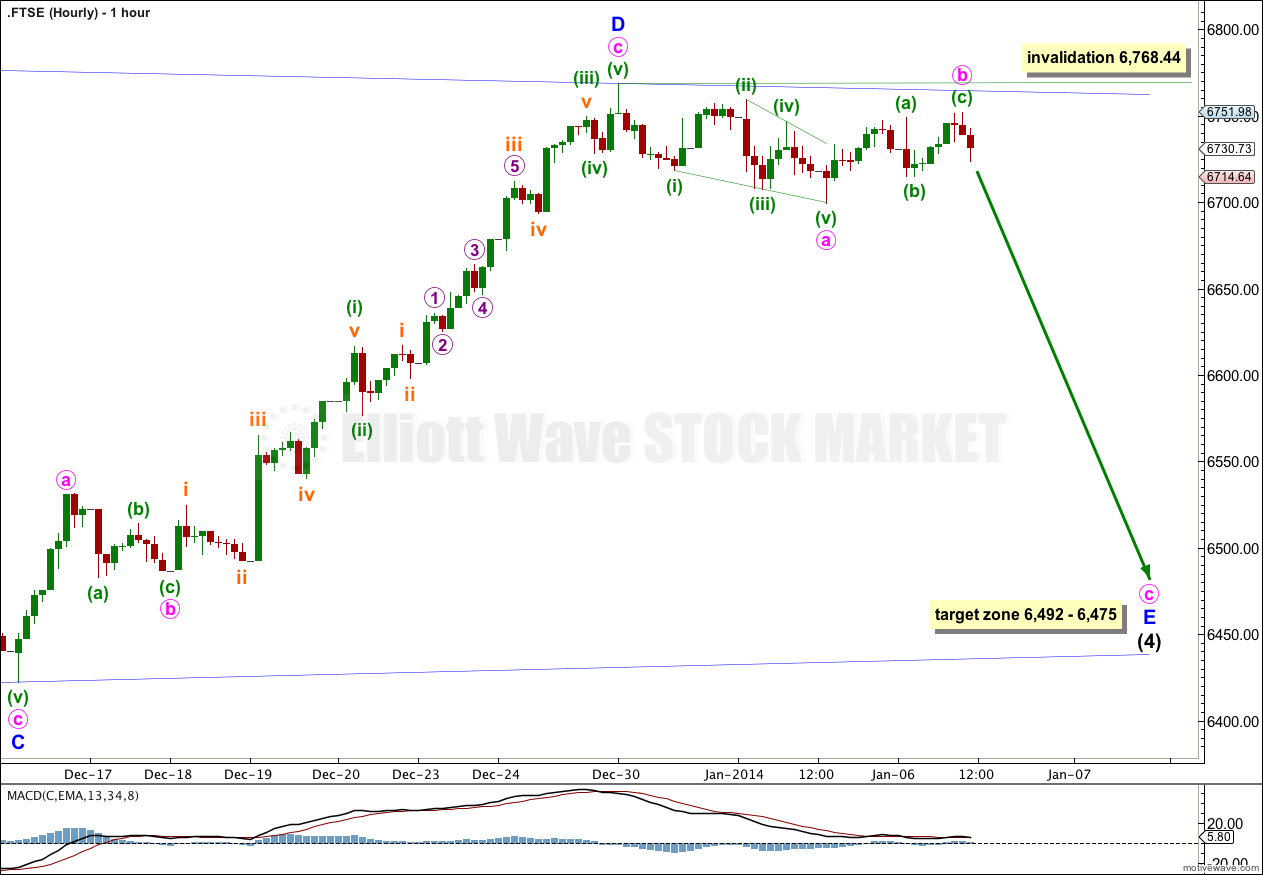Last analysis expected downwards movement to be a second wave correction. This now looks very unlikely because the second wave would have breached the lower edge of an acceleration channel drawn about the first and second wave of one degree higher. What is now more likely is a continuation of intermediate wave (4) as a regular flat correction.
Click on the charts below to enlarge.
A large super cycle degree flat correction may be unfolding for super cycle wave II.
Within the flat cycle wave a is a zigzag with a truncated primary wave C.
Cycle wave b is an incomplete zigzag. Within it primary waves A and B are complete, primary wave C is incomplete.
Within primary wave C intermediate wave (4) is most likely incomplete. When it is done a final upwards wave for intermediate wave (5) would be likely to take price to 7,103.67 or above so that cycle wave b is 105% or longer than cycle wave a. This would see super cycle wave II an expanded flat correction which is the most common type of flat.
Within primary wave C intermediate wave (4) may not move into intermediate wave (1) price territory. This wave count is invalidated with movement below 5,989.07.
At this stage it looks most likely that intermediate wave (4) is unfolding as a regular contracting triangle.
Intermediate wave (4) cannot now be a combination because the second structure of the double would have to be a flat (the first would be a zigzag), and within that possible flat so far although its A wave would subdivide as a three, the minimum requirement of 90% for its B wave has not been met.
Within the triangle minor wave B is a 93% correction of minor wave A, minor wave C is a 50% correction of minor wave B, and minor wave D is an 87% correction of minor wave C.
Minor wave E is most likely to undershoot the A-C trend line. Minor wave E may not move beyond the end of minor wave C below 6,422.23.
Minor wave E may have begun with a leading contracting diagonal for minute wave a, and a small zigzag for minute wave b.
If minor wave E ends between 6,492 and 6,475 then it would be 80% to 85% the length of minor wave D. This is a common length for subwaves of triangles.
Within minor wave E, if minute wave b moves higher it may not move beyond the start of minute wave a above 6,768.44.



